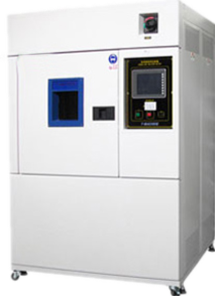
NewsInformation Center
Xenon Arc Weatherometer evaluates the influence of light on dyes
2021/11/01
The color fastness to sunlight refers to the resistance of the color of textiles to the effects of sunlight during the ingestion process. At present, the color fastness of textiles has been paid more and more attention at home and abroad. Many product standards of the textile industry in China regard the color fastness to light as an important assessment index. For example, in FZ/T43017-2003 promulgated in 2003, the color fastness of stretch silk to sunlight has been used as an assessment index. The chemical fiber silk fabric and cotton product standards also regard the color fastness to light as an important assessment index, in order to strengthen the testing requirements for the light fastness of textiles. In May 2003, at the AATCC (American Association of Textile Chemists and Dyeers) industry annual meeting, the AATCCTM16 new standard for light fastness was officially passed. The color fastness standards of ecological textiles have also increased the color fastness to light. Under the background of new requirements and standards for color fastness to light at home and abroad, Chinese textile enterprises must understand and master the factors that affect the color fastness to light. Ensure product quality. Discuss the characteristics of reactive dyes and analyze the factors affecting the light fastness of finished fabrics.
Ci3000+Xenon Arc Weatherometer to evaluate the influence of light on dyes:
ATLASCi3000+Xenon Arc Weatherometer uses a water-cooled xenon lamp to simulate natural sunlight to evaluate the weathering resistance of textiles. The digital control system further upgrades the Ci3000 series. Previously, the Ci3000 series has obtained CE, UL, CAS, ISO and EN certifications. , Shanghai Qianshi Precision Electromechanical Technology Co., Ltd. can act as an agent. Customers in need are welcome to inquire in time.
The main parameters:
Ci3000+Xenon Arc Weatherometer to evaluate the influence of light on dyes
In addition, the technical engineer of Standard Group stated that during the solarization process, the effects of light on dyes are as follows:
(1) For the structure of the dye, under the action of ultraviolet light, the chemical bond in the dye changes or even breaks, causing the structure of the chromophore and auxochrome group in the dye to be destroyed, thereby losing the color; it may also be caused by ultraviolet light. Under irradiation, the three-dimensional structure of the dye changes, causing the color to change and the performance* to change;
(2) Interpretation from the changes in the electronic structure and energy of the dye molecule. In dyes, most of the chromophores belong to electron-donating-electron-accepting chromophores. The same feature is that the conjugated double bond forms a bond. After the electron gains energy, it transitions to the antibond orbital with higher energy. When the bonding electrons return to the original bonding orbital, they will release energy, thereby producing different colors. Under visible light irradiation, the energy obtained by the bonding electrons is relatively small and can only transition to a lower anti-bonding orbital. This kind of transition will produce different colors according to different conjugated systems. When a large amount of higher energy ultraviolet light (x<400nm) is irradiated, some of the bonded electrons can obtain higher energy and transition to a higher energy level. The electrons in the anti-bonding orbital, or in the bonding orbital at a lower energy level, transition to the anti-bonding orbital. When these electrons return to their original orbits, they release different energy, show a different color from the original, and show different light fastnesses.
The above is the details of the relevant content that the Standard Group will answer for you in detail. I hope to help you. Of course, if you need to purchase, you are welcome to come to leve message to us!
Previous: Introduction to the characteristics of each type of Uv Accelerated Weathering Te
N e x t : What are the safety tests for food packaging materials?




